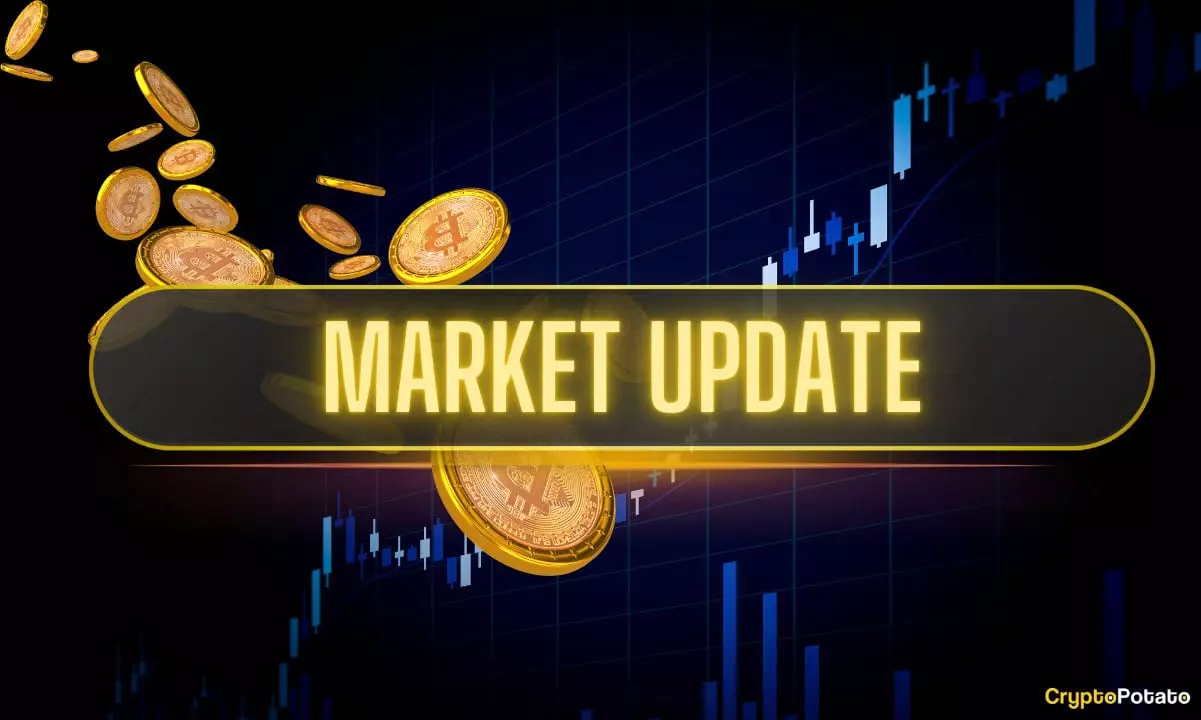In the world of cryptocurrency, few events generate as much excitement and trepidation as Bitcoin reaching new historic price points. After an arduous four-month wait, characterized by price drops and gains that had even the most dedicated investors on edge, Bitcoin (BTC) has once again taken center stage by surpassing its previous all-time high of $109,100. The journey to this new peak was nothing short of chaotic, as various external factors continuously influenced Bitcoin’s momentum. This latest surge is remarkable not just for its height but for the resilience displayed by Bitcoin’s bullish investors.
The volatility observed in the past week alone serves as a testament to both the speculative nature of cryptocurrencies and their potential for explosive growth. Bitcoin’s repeated tests of the $107,000 resistance illustrated a market hesitant yet eager to break through barriers. As newfound enthusiasm caught fire on Wednesday, BTC soared beyond $110,000, igniting a wave of optimism across cryptocurrency trading platforms. Yet, this triumph came hand-in-hand with typical market corrections, showcasing the delicate balance that governs digital asset prices.
The Impact of Political Developments
No sooner had Bitcoin touched $112,000 on the symbolic Bitcoin Pizza Day than it was juiced down by the reverberations of geopolitical drama. Following President Trump’s stark proclamation of potential 50% tariffs on European Union nations, BTC immediately reacted, spiraling downwards at breakneck speed. In a cryptocurrency landscape that often seems deeply intertwined with broader economic policies, such statements can send shockwaves through the market, catching investors off guard. The immediate $3,500 drop serves not only as a lesson in market psychology but also highlights the volatile relationship between politics and cryptocurrency.
Despite this fluctuation, Bitcoin has displayed robust resilience, settling around $109,000 and still maintaining impressive weekly gains. While many altcoins suffered minor setbacks, Bitcoin rose through the tumult, underlining its revered status within the crypto community. This complex interactivity between crypto and external factors is vividly illustrated in Bitcoin’s swift recovery, which underscores the asset’s capacity to rebound even when faced with the potential threat of legislative change.
Rivalry in the Crypto Sphere
Despite Bitcoin’s resounding success, the altcoin market has also emerged from the shadows, with a noteworthy contender named HYPE recently stealing attention. Surpassing previous highs with a 30% rise, HYPE has created a stir that signifies a continuum of innovation and excitement within the realm of digital currencies. What becomes evident in this moment is that while Bitcoin remains the leader, the ever-evolving altcoin landscape sometimes rivals or even eclipses its dominance. The rise of coins like HYPE prompts questions about the future of investment strategies and showcases the dynamism that exists beyond the Bitcoin-centered discussions.
Despite Bitcoin’s impressive market dominance, aspiring investors must watch for opportunities in the growing altcoin followership. As evidenced by HYPE’s recent achievements, the cryptocurrency industry is no longer a monolith; it is an ecosystem teeming with creativity and rapid change.
The Stability of Bitcoin Amidst Competition
Surprisingly, Bitcoin’s recent burst into uncharted territory has been met with contrasting views regarding its long-term sustainability. Comprehensive on-chain data indicates that the current rally differs from earlier surges, suggesting a healthier, more grounded ascent rather than a bubble waiting to burst. Moreover, emerging reports regarding significant institutions, including major U.S. banks contemplating a joint stablecoin, illuminate the broader acceptance and integration of digital currencies into established economic structures.
Yet, one can’t ignore the growing dialogue surrounding Bitcoin ETFs, particularly the explosive growth of BlackRock’s Spot Bitcoin ETF (IBIT). While such developments signify a maturing market, they also raise pertinent concerns regarding centralization—an issue that Bitcoin proponents have long grappled with. The idea that one entity could dominate the ETF space presents a paradox for those who cherish Bitcoin’s decentralized origins.
Profit-Taking Trends and Their Implications
As Bitcoin continues to surge, the natural ebb and flow of profit-taking remain crucial to consider. Ethereum (ETH), which has also seen dramatic gains lately, appears to be experiencing this very phenomenon, with a slight pullback indicating that its investors are pocketing gains amid fear of a retracement. Interestingly, despite these fluctuations, indicators like the decreasing amount of ETH held on exchanges might signal a bullish trend, contrasting with historical behaviors leading to downward trends.
In a world that thrives on volatility, holding tight to an asset during market shifts could prove beneficial—emphasizing the importance of informed trading strategies founded not just on price but on sentiment and data. As traders navigate this tumultuous landscape, this kind of insight becomes essential, providing a roadmap for those daring enough to maximize opportunity amid uncertainty.

